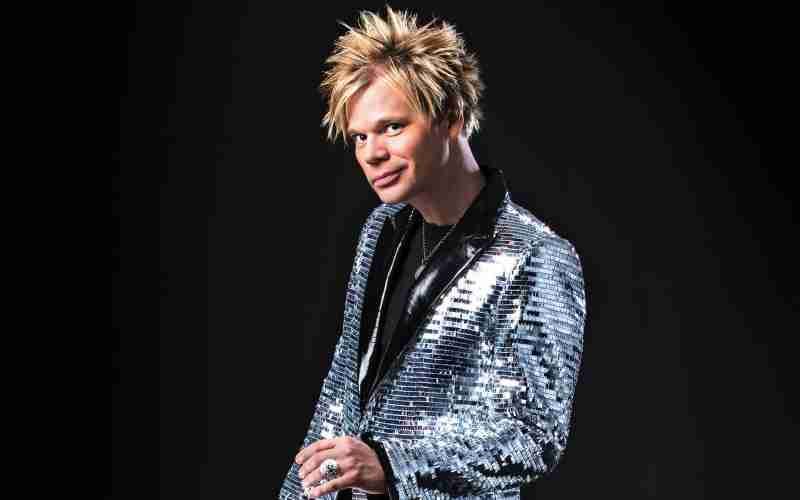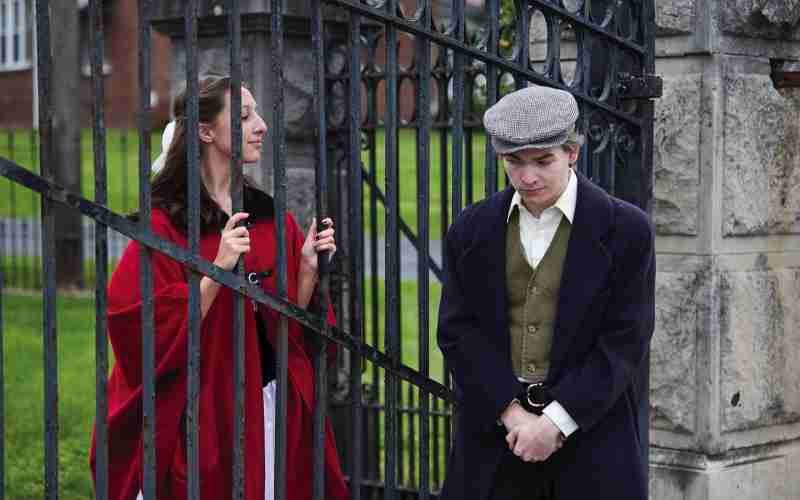When smooth jazz pianist and trombonist Brian Culbertson was a sophomore at DePaul University, he sent demos of his music to the only guy he knew in the music industry, a drummer and radio promotor named Bud Harner.
Harner played the demos for executives at Mesa/Bluemoon Recordings. They offered Culbertson a six-record contract.
Jim Snowden, the label’s president, told him they’d need a full album in three months.
“No problem,” Culbertson, a college student with a full slate of classes, assured him.
He recorded the entire album in his apartment using one of the first digital recorders.
This was not easy to do. Like a lot of dewy technological innovations, that digital dinosaur may have created more problems initially than it solved.
But Culbertson got the job done.
That’s when his troubles really started.
A far less troubled Culbertson will perform at the Clyde Theatre on Nov. 19.
Operating at a Loss
In the early 1990s, success as a musician still depended on being signed to a label. So Culbertson’s career should have been made when he signed with Mesa/Bluemoon. But Mesa/Bluemoon was a small label without a lot of money.
Culbertson had to dip into his own wallet to finish his debut album, he had to quit school to go on his first tour, and he had to borrow money from his girlfriend to pay his band.
Culbertson had been “discovered” and his reward for it was that he was operating at a loss.
“It’s funny because most people think, ‘Oh, you’ve got a record deal. You’re rich now,’” Culbertson said in a phone interview with Whatzup. “Well, it was the actual opposite.”
To get closer to breaking even, Culbertson got a job as a jingle writer.
“My college composition teacher owned a jingle company,” he said. “That was his main thing. So, he was like, ‘Hey, I want you to come work for me.’”
Being a jingle writer at a big Chicago firm in the 1990s was no cake walk.
“If we got a job at 10 p.m. on a Saturday night, the client would come over on Sunday morning at 8 a.m. expecting to hear six different versions,” Culbertson said. “And you couldn’t say ‘no’ to anybody. Because they would stop calling you. You had to say ‘Yes’ to everybody.”
Writing albums, touring, and writing jingles at all hours meant that Culbertson wasn’t sleeping a whole lot.
“I was 22 years old, and I was having a nervous breakdown,” he said.
Embracing Smooth Jazz
But he endured. The girlfriend who’d lent him money became his wife. And Culbertson became one of most popular artists in the genre known as smooth jazz.
But what does smooth jazz really mean?
Culbertson has been known to write and perform straight jazz, funk, R&B, and new age music.
The term smooth jazz gives some people a warm feeling and others a queasy feeling.
“There’s a lot of bad music within the genre,” Culbertson said. “There’s a lot of bad music within any genre. Unfortunately, a lot of the bad stuff (in smooth jazz) has gotten through and gets played on the air.
“I can’t listen to the stations a lot because it’s like, ‘Oh my god. That sounds like someone made that on an iMac in their bedroom,’” he said. “’It’s just awful. That out-of-tune saxophone.’”
Culbertson said he doesn’t mind the label. He just doesn’t want to be judged by it. He wants people to listen to his music, then decide what they think.
Prince of a Guy
One guy who listened to Culbertson’s music and decided what he thought was Prince.
As in, the late Prince Rogers Nelson, Symbolman, His Royal Purpleness.
The year was 2007.
Prince was doing his Las Vegas residency and Culbertson bought a ticket.
Culbertson knew Prince’s saxophonist at the time, a guy named Mike Phillips.
“Before I went, I called Mike and said, ‘I just wanted to let you know that we’re going to be at the show,’” he recalled. “And he’s like, ‘Oh, why don’t you bring your horn? Maybe you can sit in on the jam session after the show.’ I’m like, ‘Really?’”
At 2 a.m., Culbertson found himself on stage with Prince’s backing musicians and other musical aspirants. Prince was nowhere to be seen or heard. He was jamming elsewhere.
The ensemble started playing and someone asked Culbertson to take a solo.
“In the middle of my solo, Prince walked in and sat right in front of me,” he said. “He was two feet in front of me just staring at me. You can imagine what was going on in my mind: ‘Oh my god. You’d better not suck.’ We’ve all heard the stories. A month prior, Prince had paid a guy $1,000 to stop playing.”
Eventually, Prince left without saying a word to Culbertson. He did, however, huddle briefly with Phillips.
“So, five minutes later,” Culbertson said, “Mike comes back up on the bandstand and whispers in my ear, ‘Hey. Prince likes you. You can stay.’”
A four-hour jam session ensued.
“On all the breaks, he just wanted to talk to me,” Culbertson said. “It was me and him backstage, talking about music and life and whatever. That was incredible.”
The Jam and the Fruit
That jam session bore a lot of fruit. With some of Prince’s backing musicians, Culbertson recorded his well-received funk album, Bringing Back the Funk.
Guests on the album included Bootsy Collins and Phelps “Catfish” Collins, both of whom had played with James Brown. Also, Sly and the Family Stone’s Larry Graham and “Ghostbusters” singer Ray Parker Jr.
The producer on the project was the late Maurice White of Earth Wind and Fire.
“I had known Maurice,” Culbertson said. “I had met him a few times out in L.A. Once I came up with the concept for the album, I called him and said, ‘Here’s what I want to do. Would you consider being a part of it in some way? I’d be thrilled if you just came by and added a hand clap.’
“And he’s like, ‘Maybe I could be executive producer,’” he said. “And my jaw hit the ground. I was like, ‘What?!’”
Reviewer Jonathan Widram called the album “a masterwork that took contemporary urban jazz to a whole new level…”
It earned a surprisingly high-profile fan in Sir Elton John.
John called Culbertson out of the blue to praise the album.
“He likes to call random musicians that he is digging at the moment. He said, ‘I bought this album for all of my five houses and bought it for my whole band. I hope to shake your hand one day.’”
John invited Culbertson to a show after which they did shake hands and converse.
And then there was the time Stevie Wonder was led up from the audience at one of Culberton’s shows and joined his band on harmonica.
Video of that can be seen on YouTube.
Back in Chicago
Culbertson has come a long way from being a Chicago-based jingle writer. Yet, he and his wife decided to move back to the Windy City from Los Angeles a few years back.
“I’d been doing this club date in London every year,” he explained. “The vibe of the city is so cool. You go out of your door and bam. You can walk anywhere. That doesn’t happen in L.A.
“Chicago is one of the only cities in America that is like that,” Culbertson said. “It’s a totally different lifestyle.”





